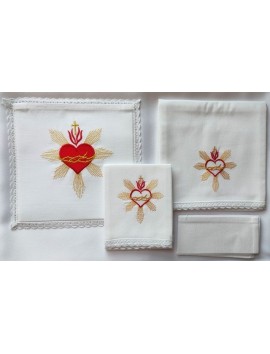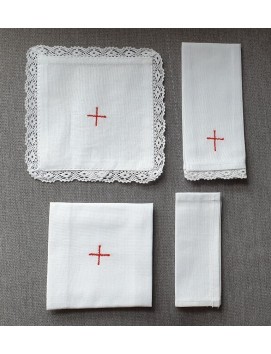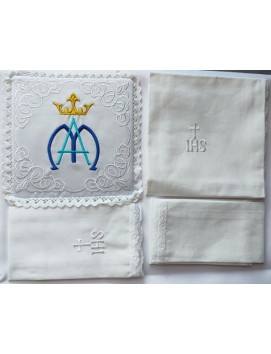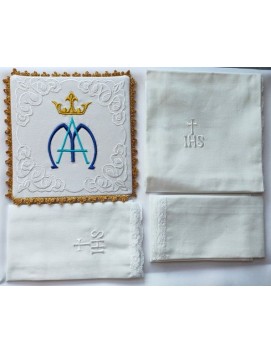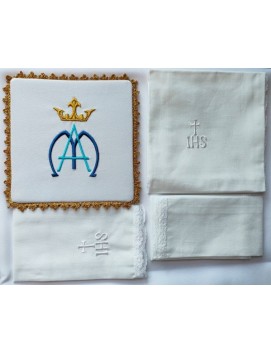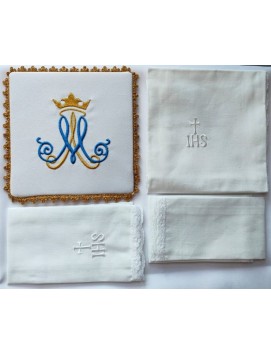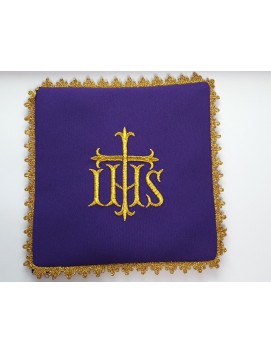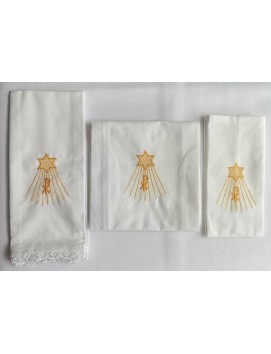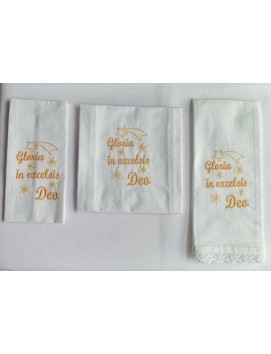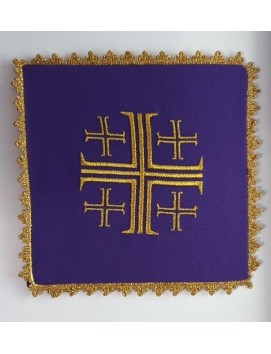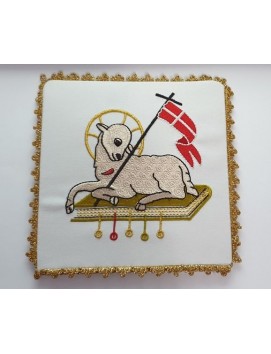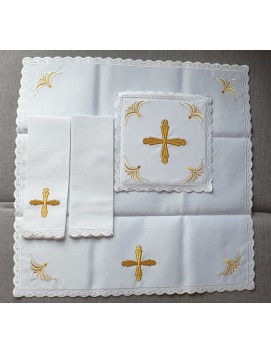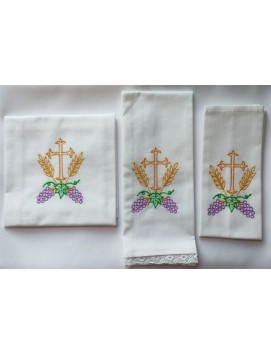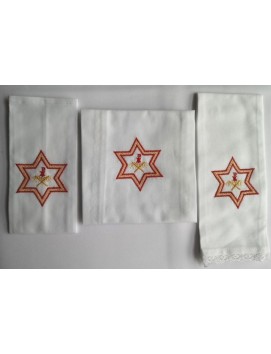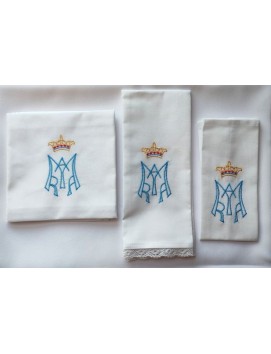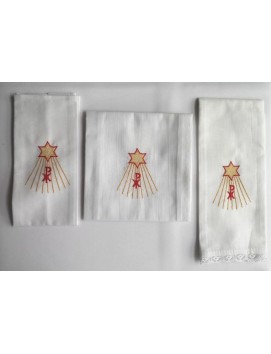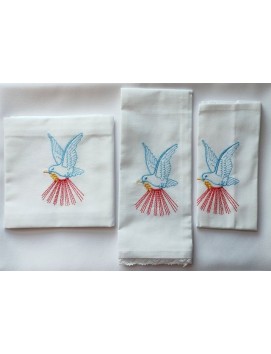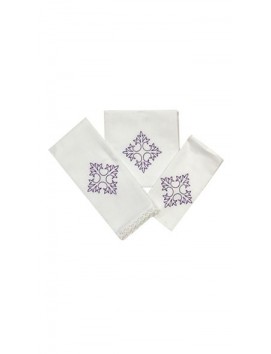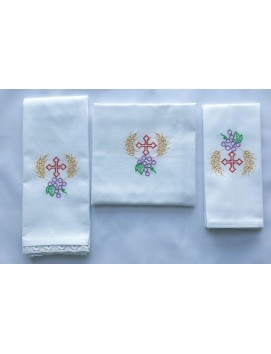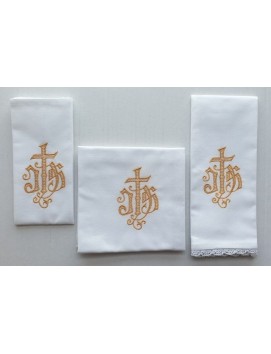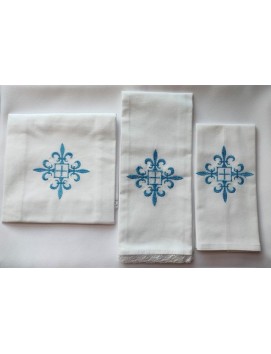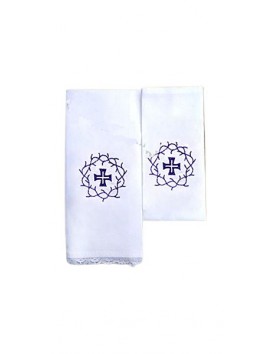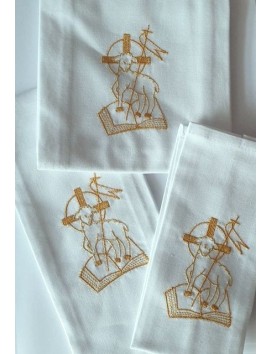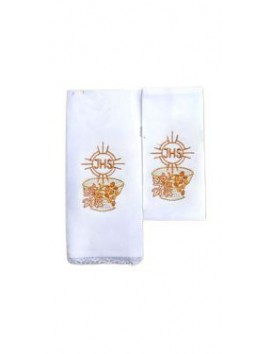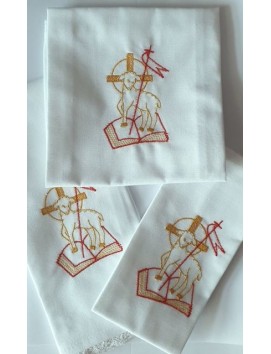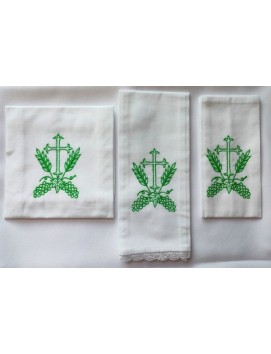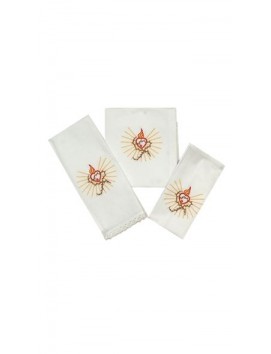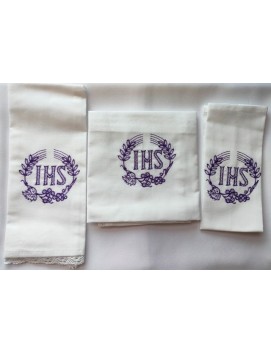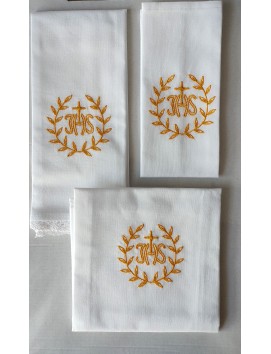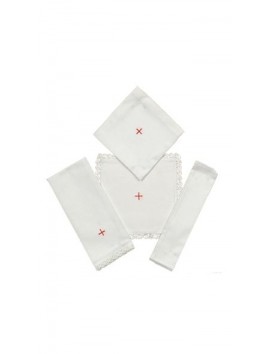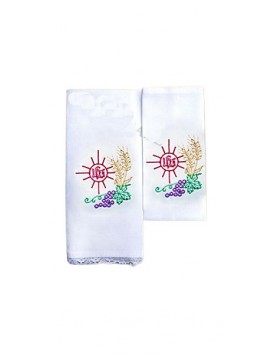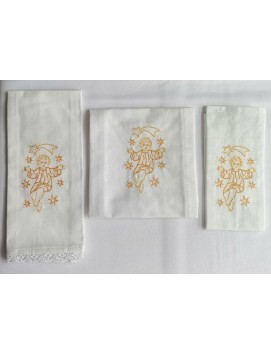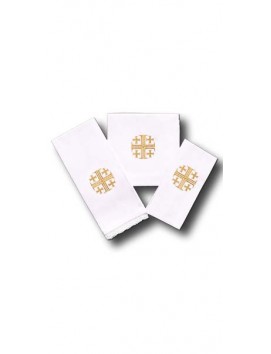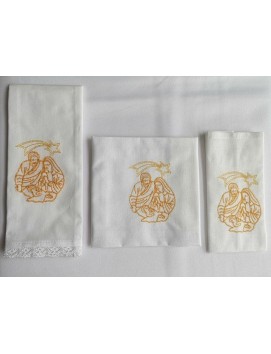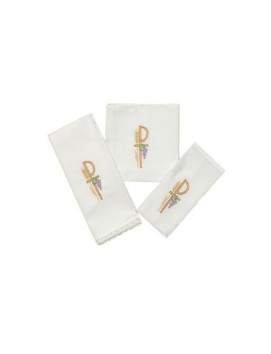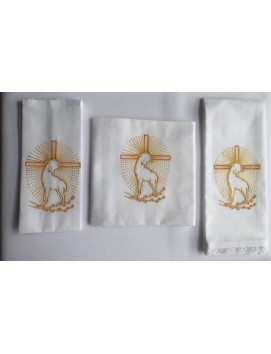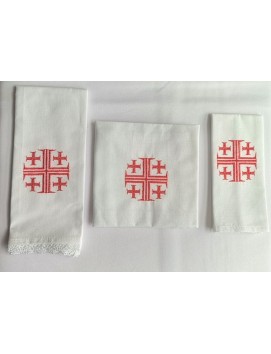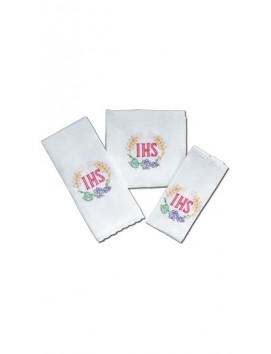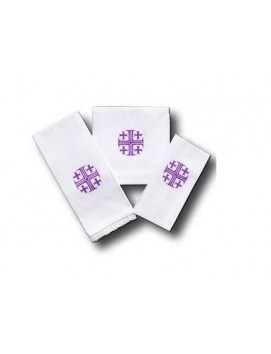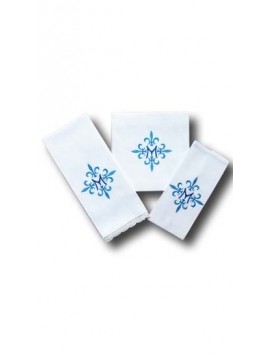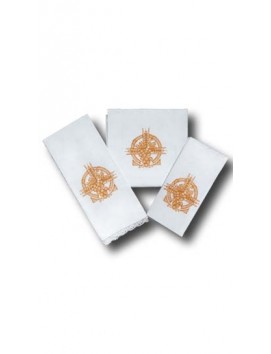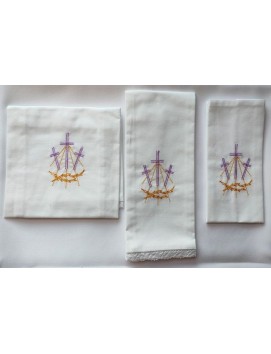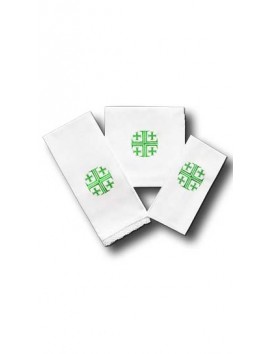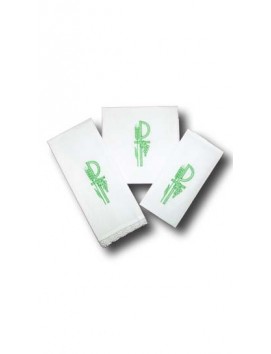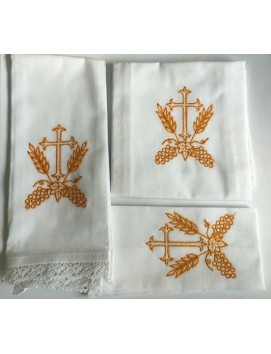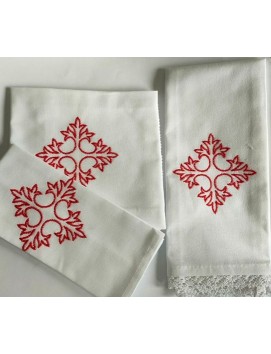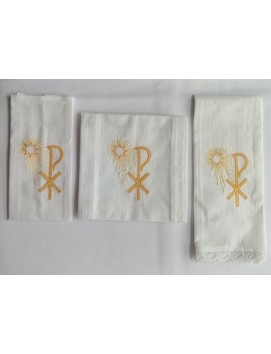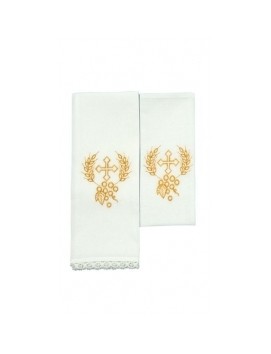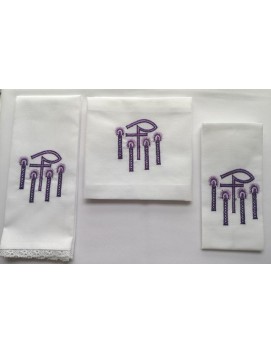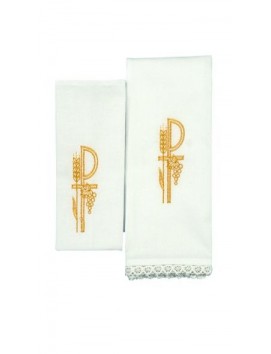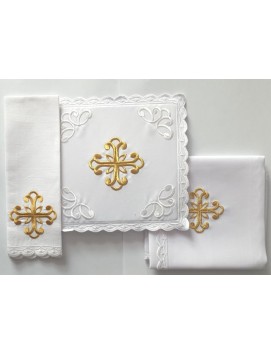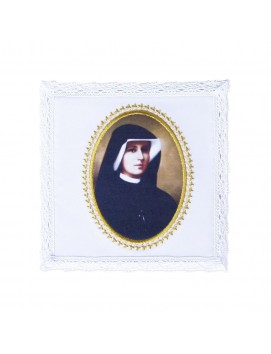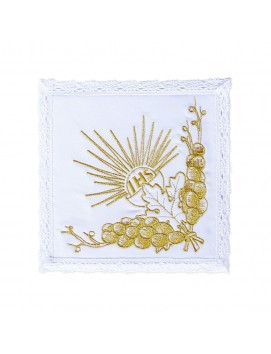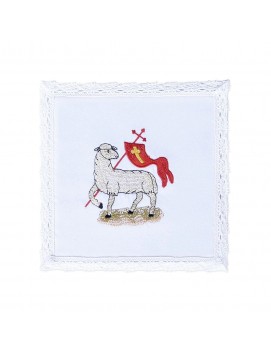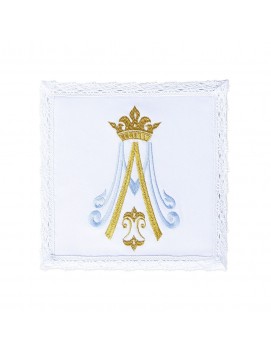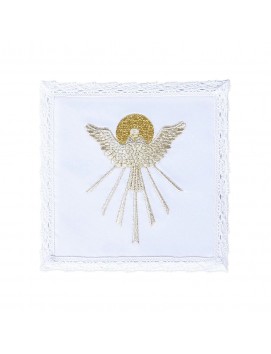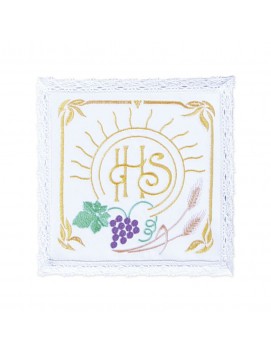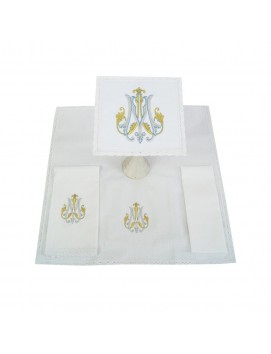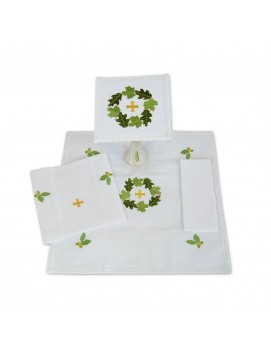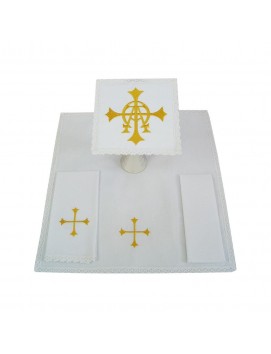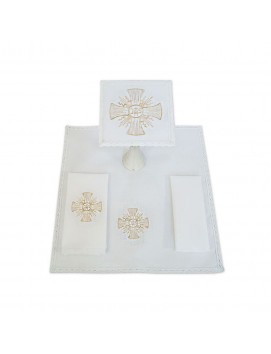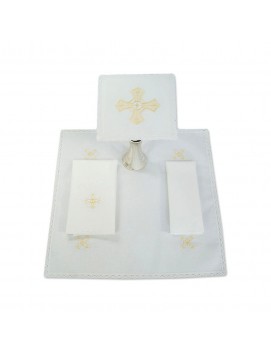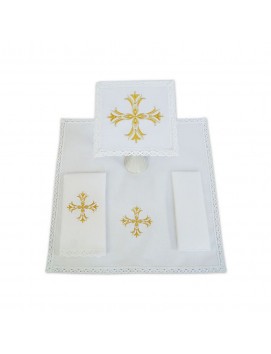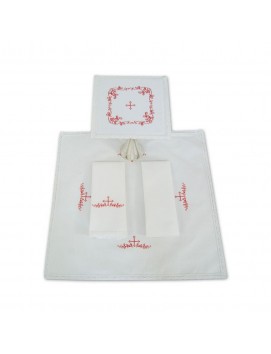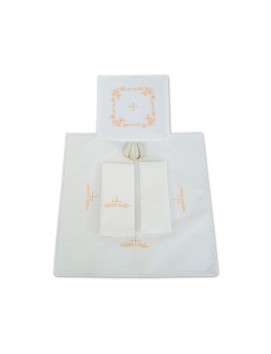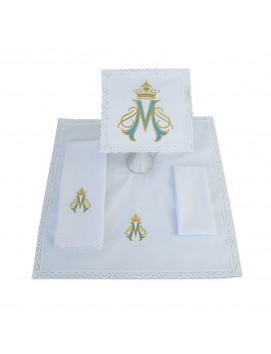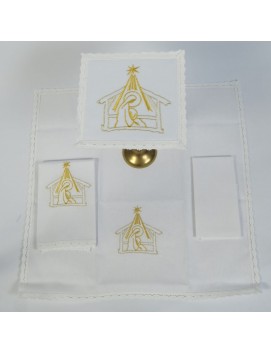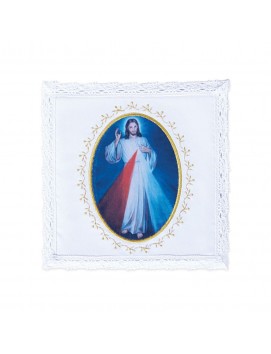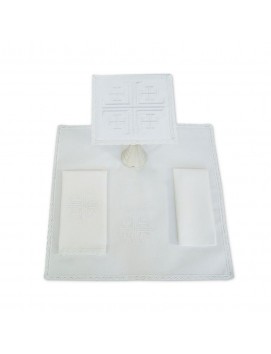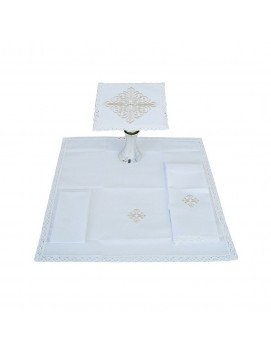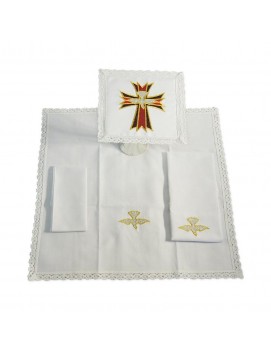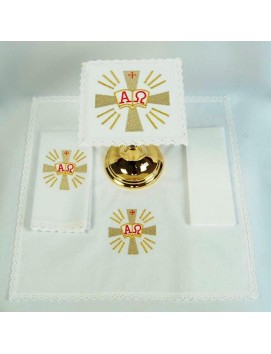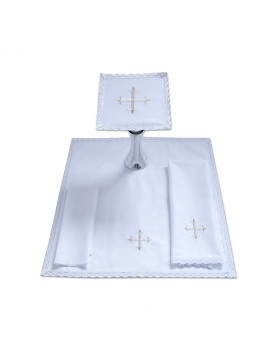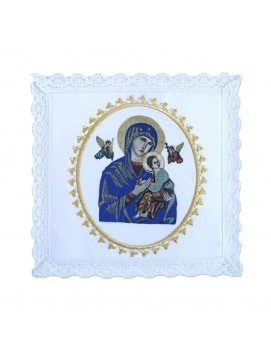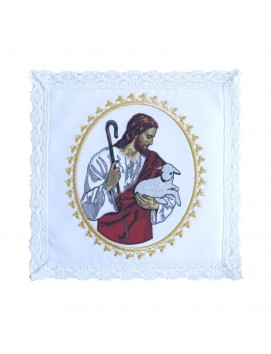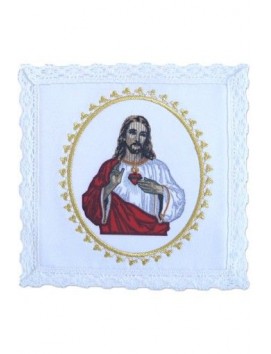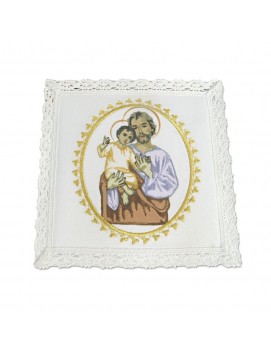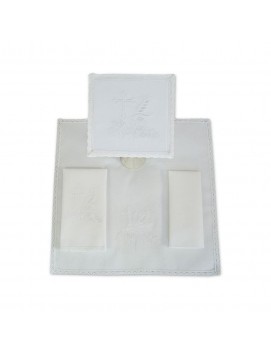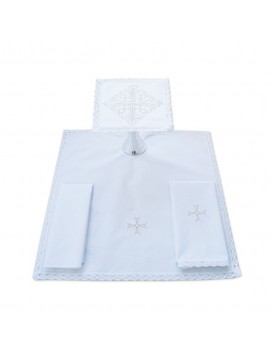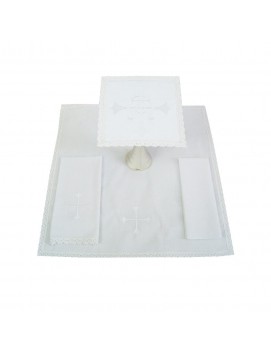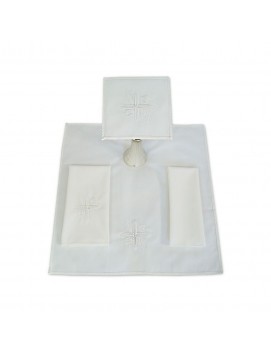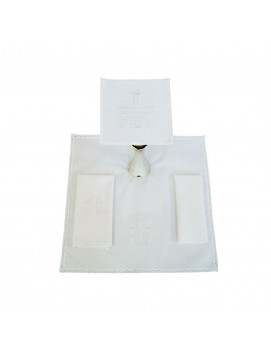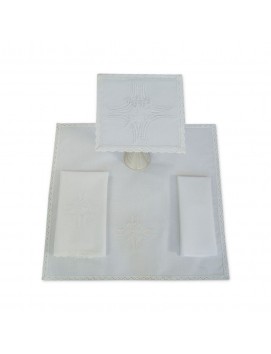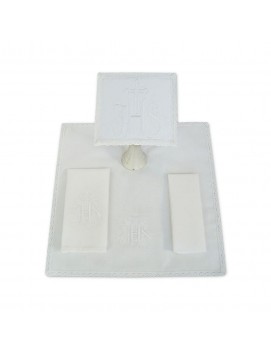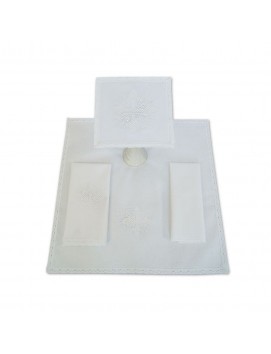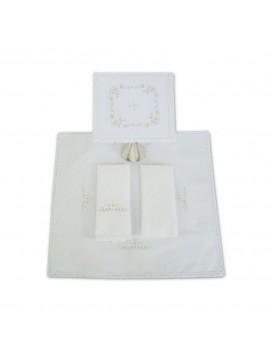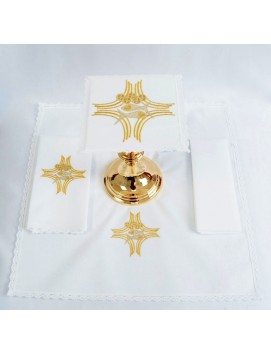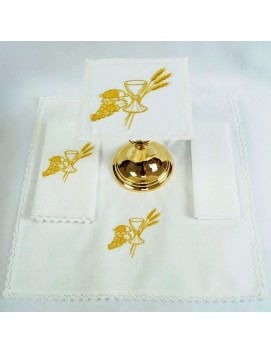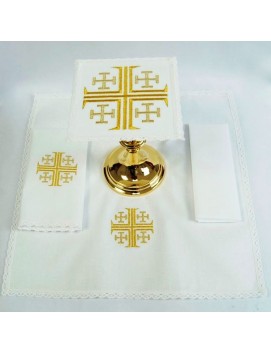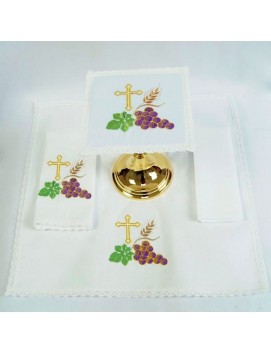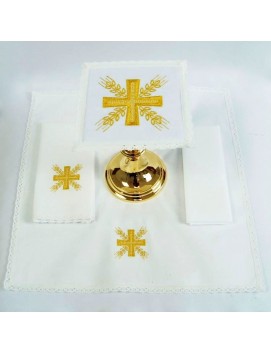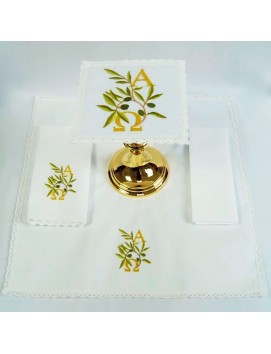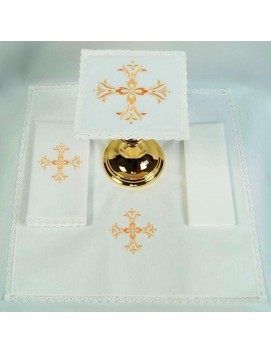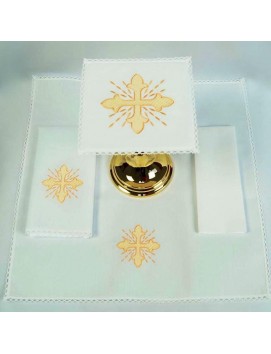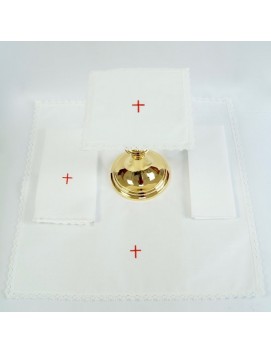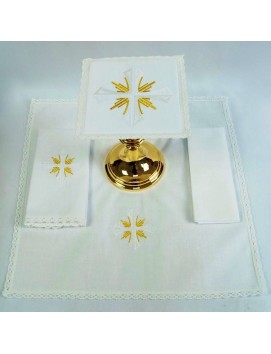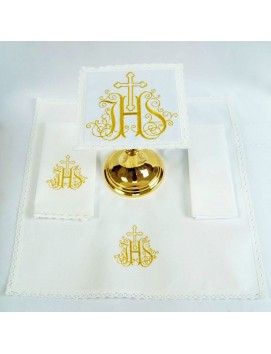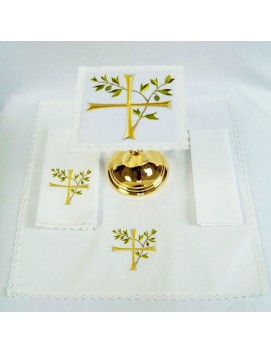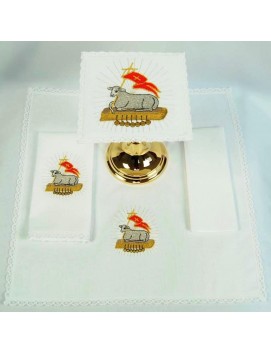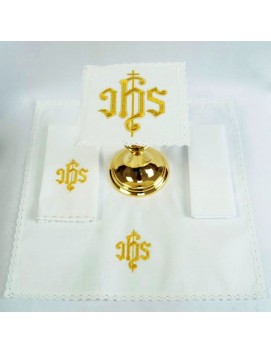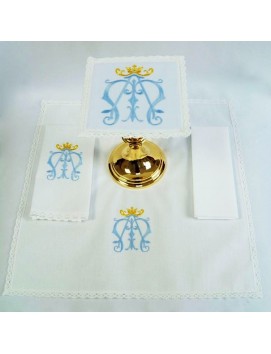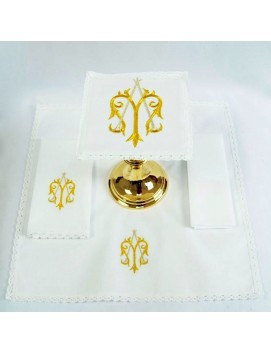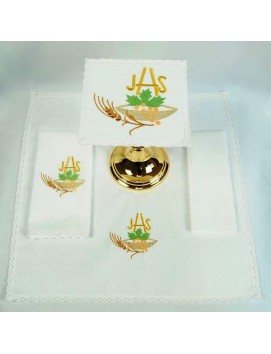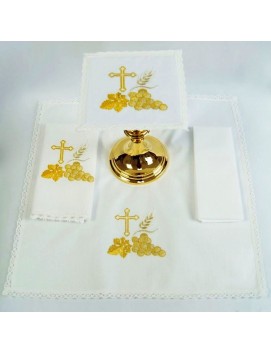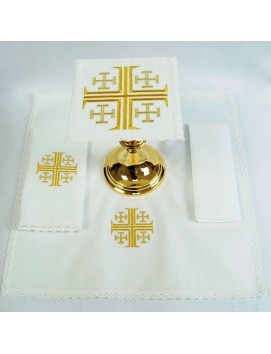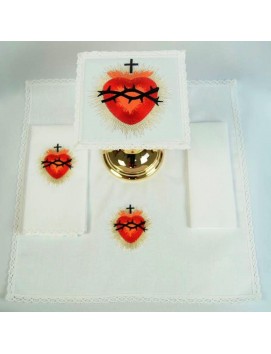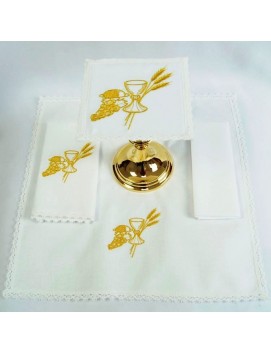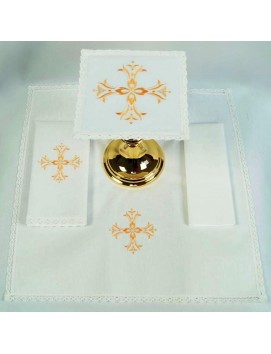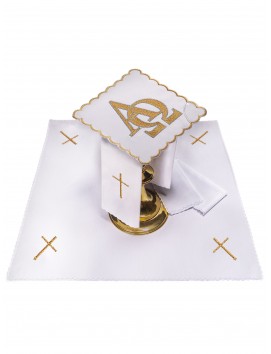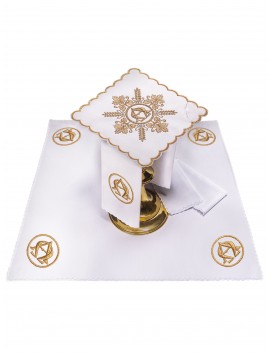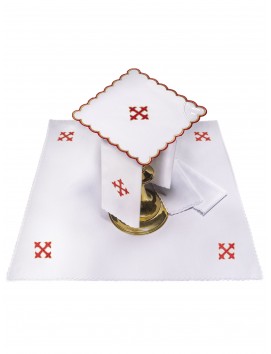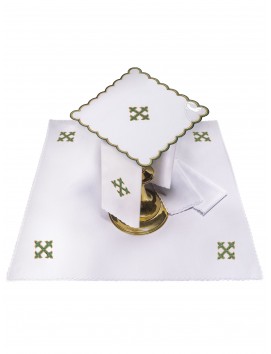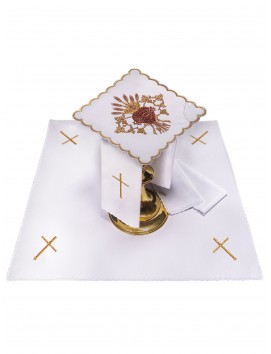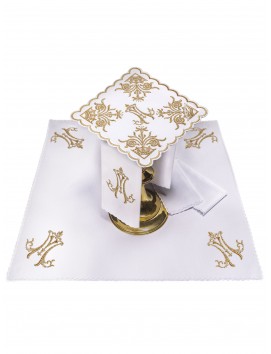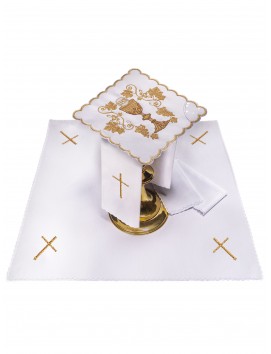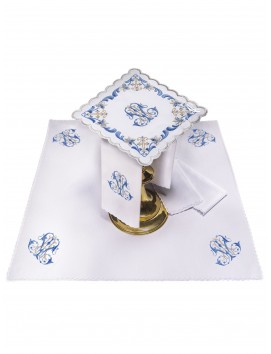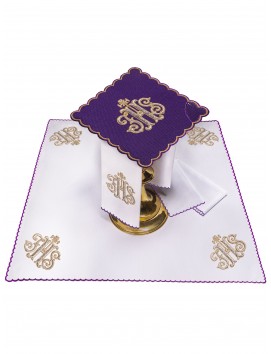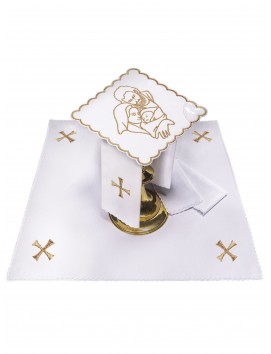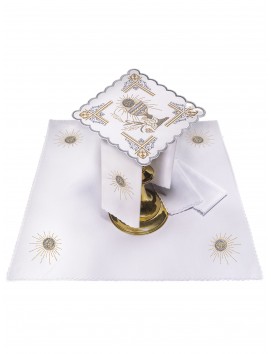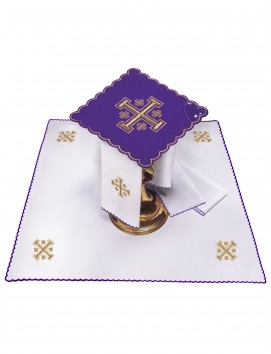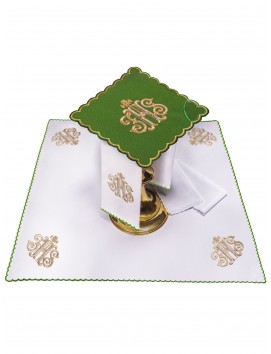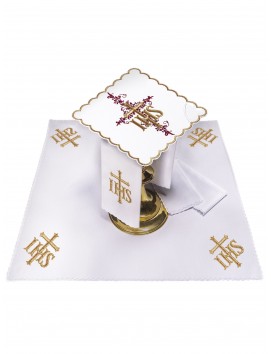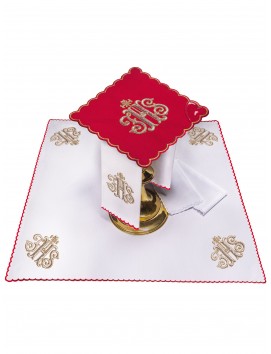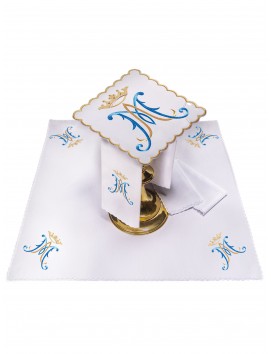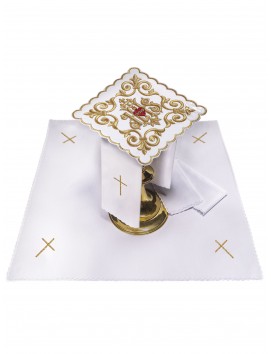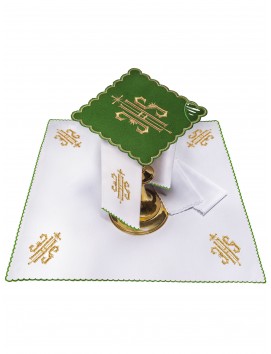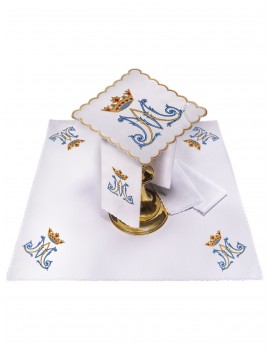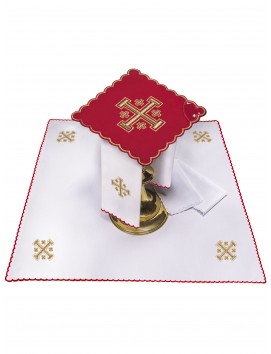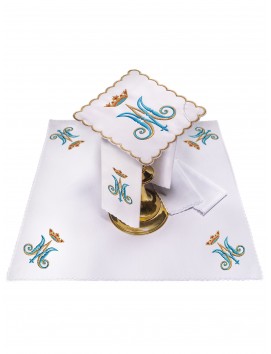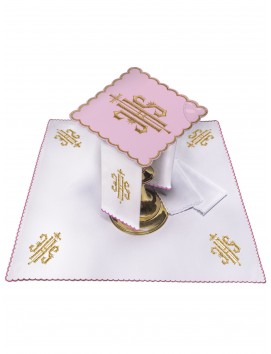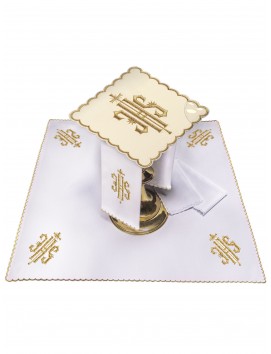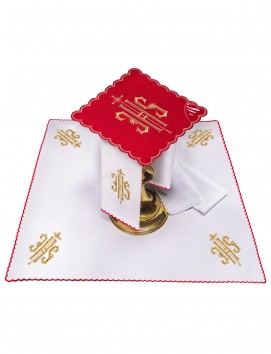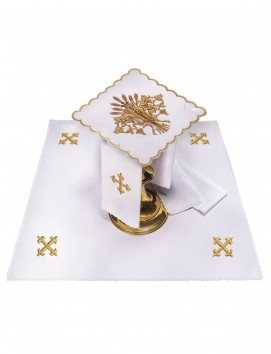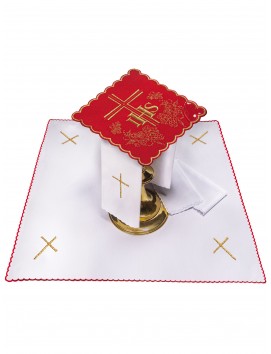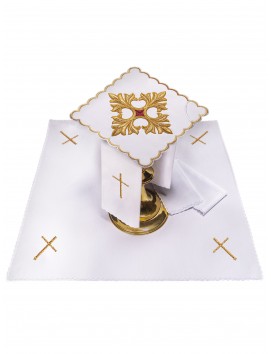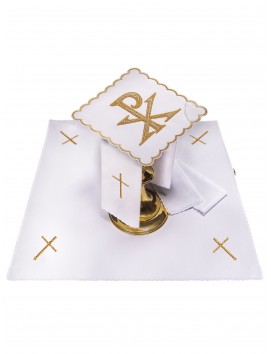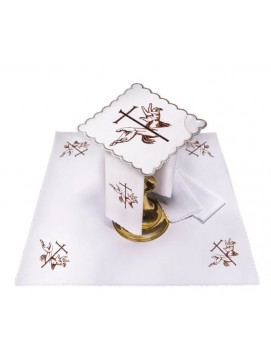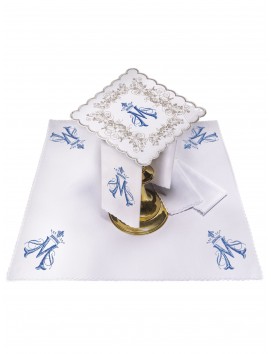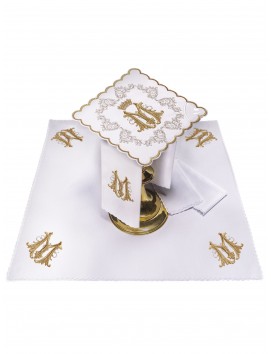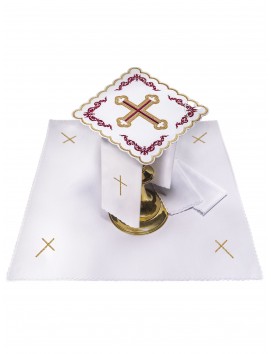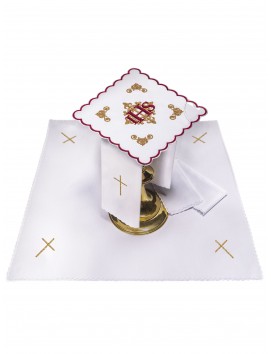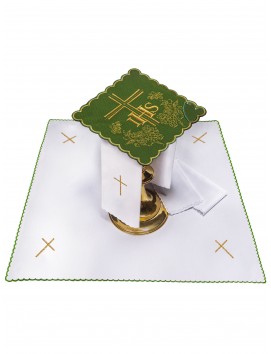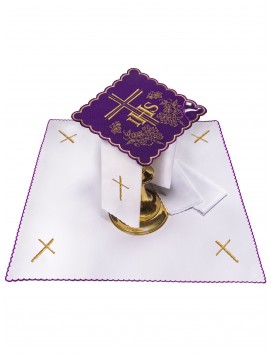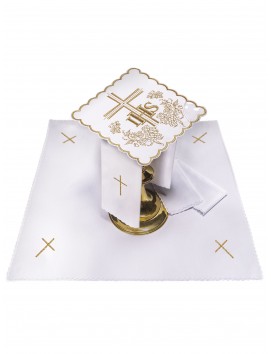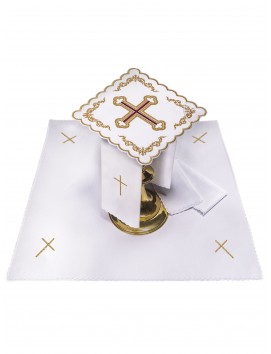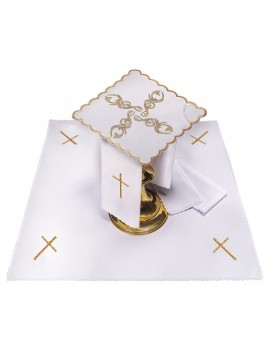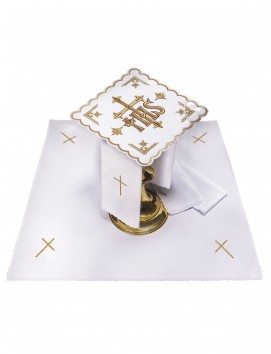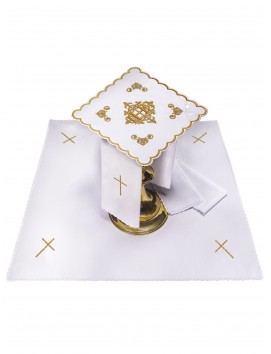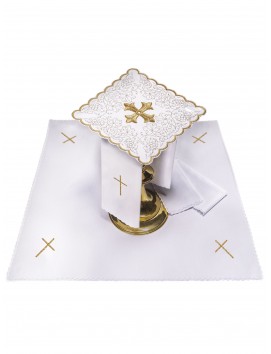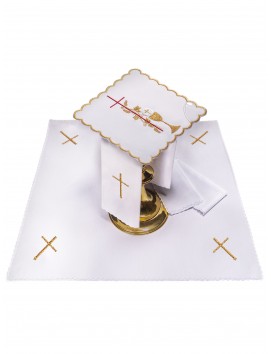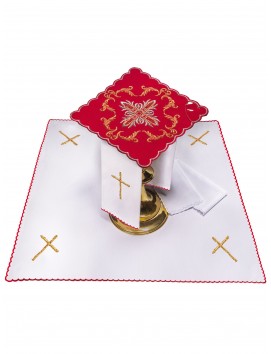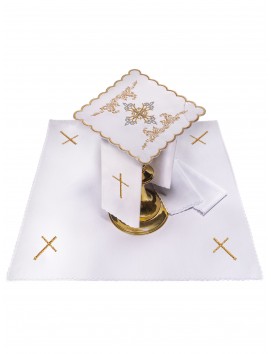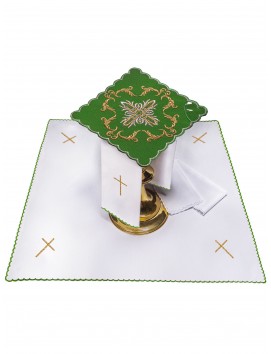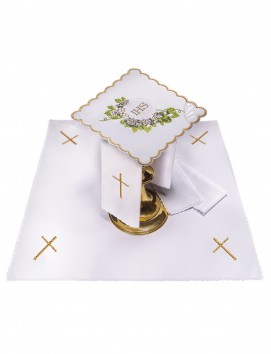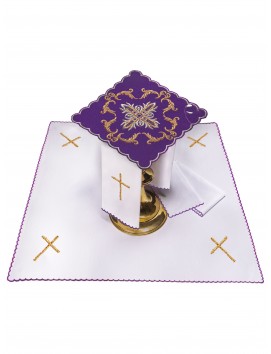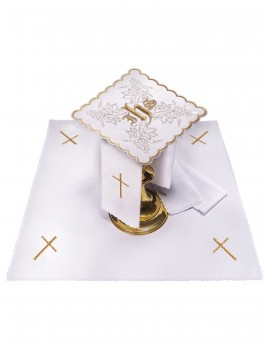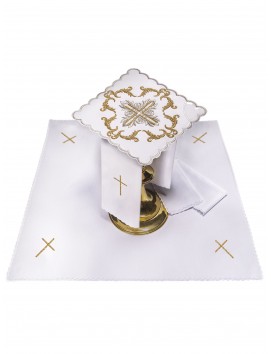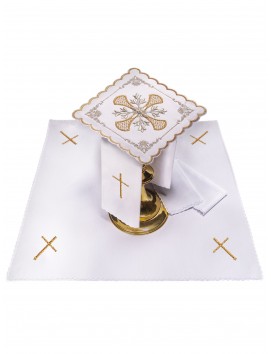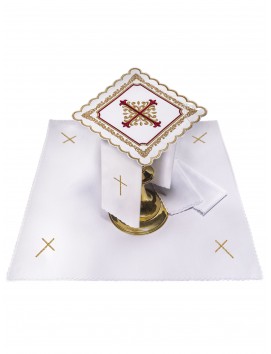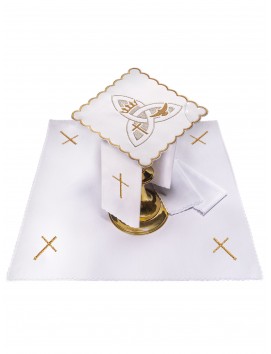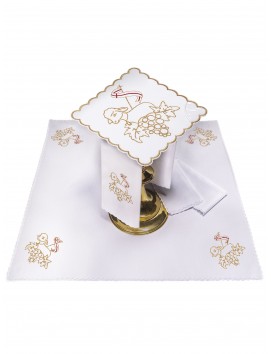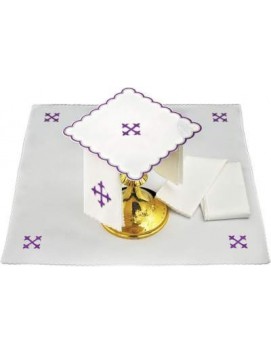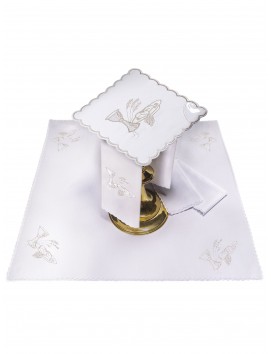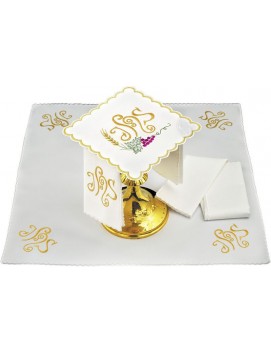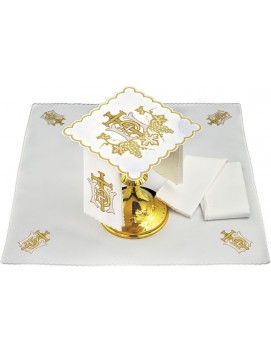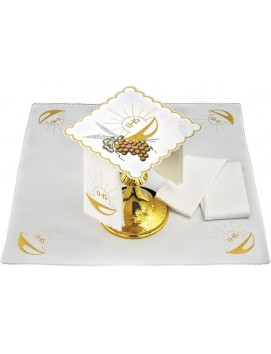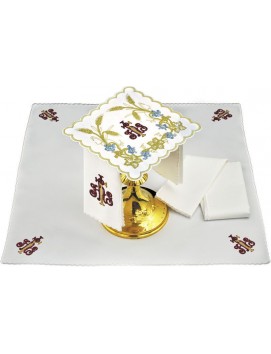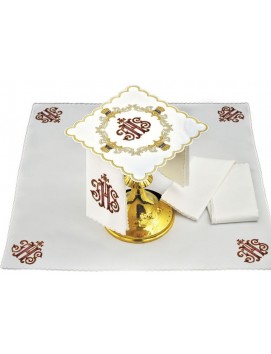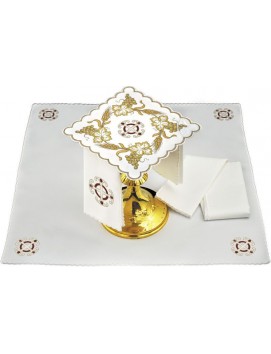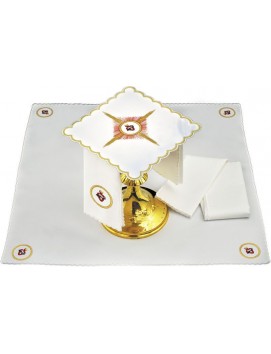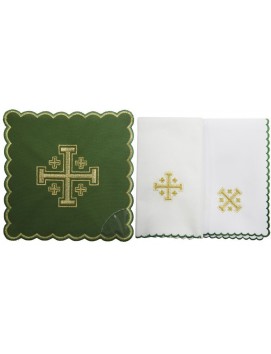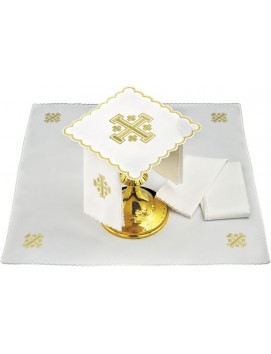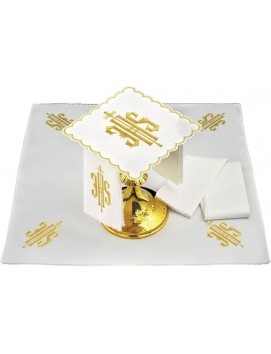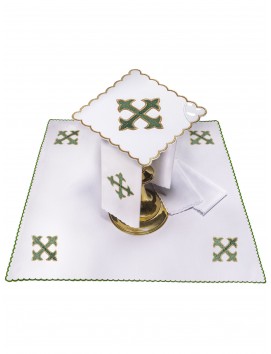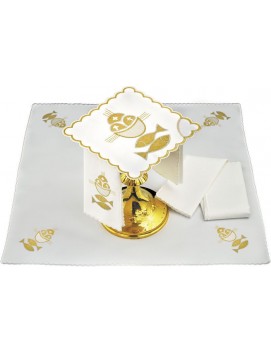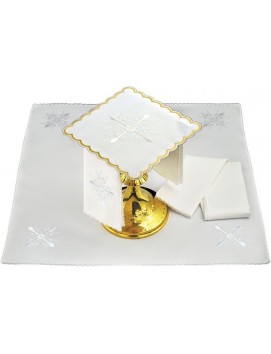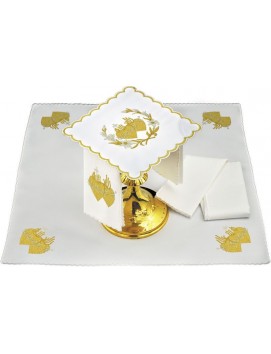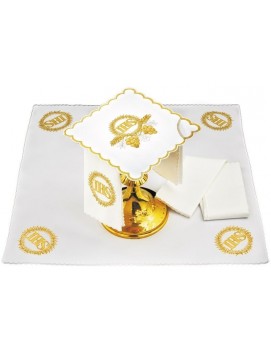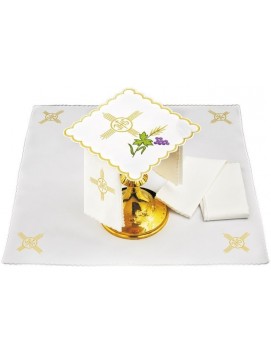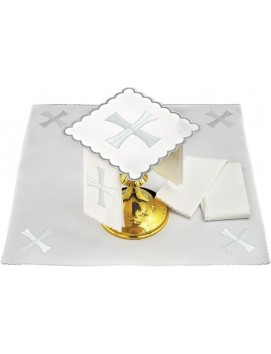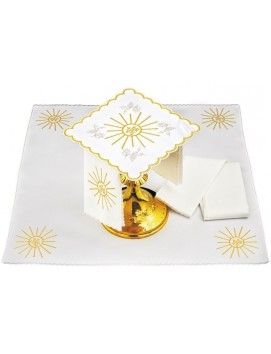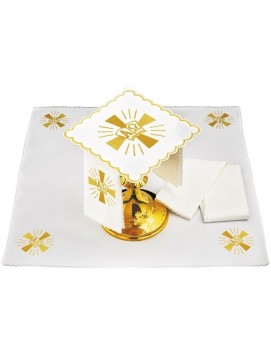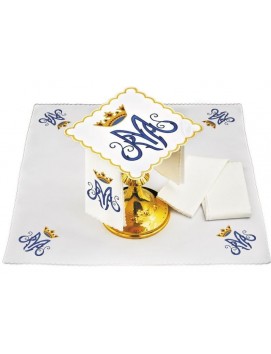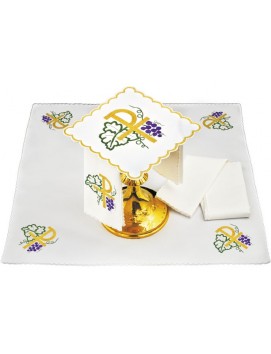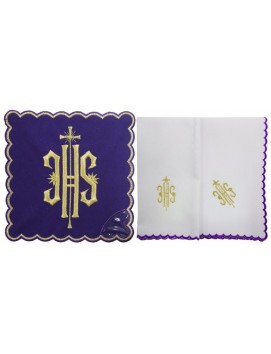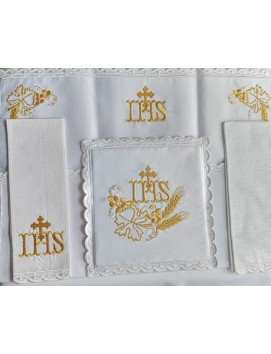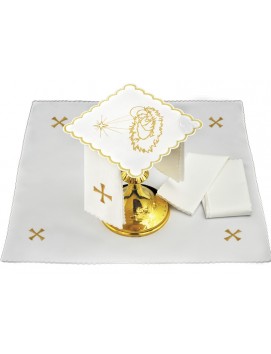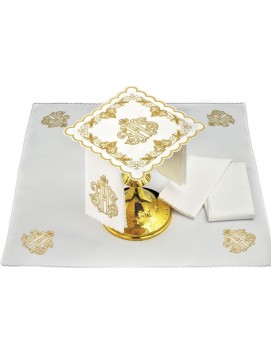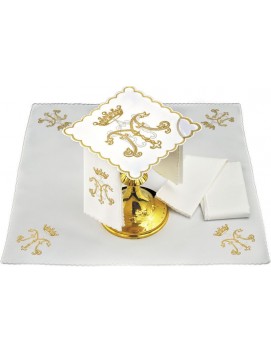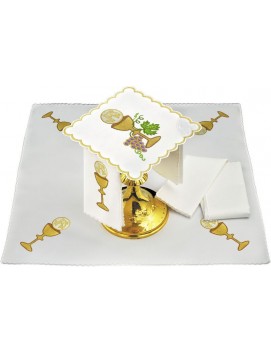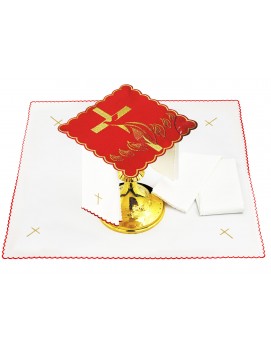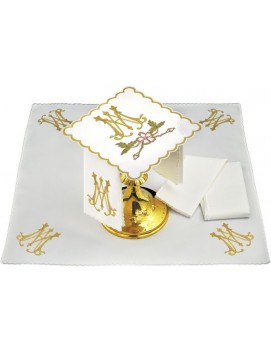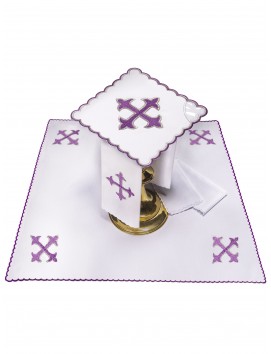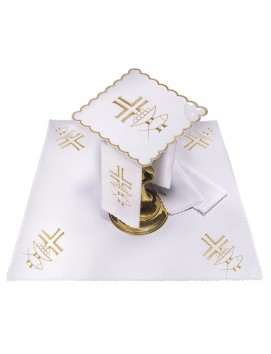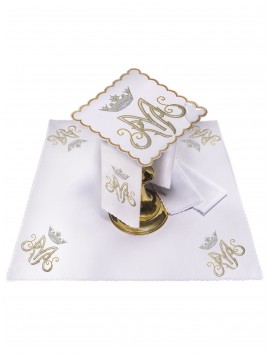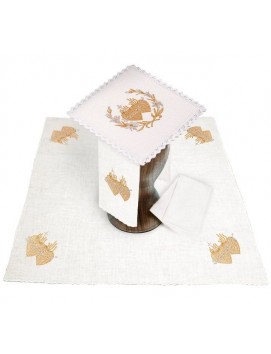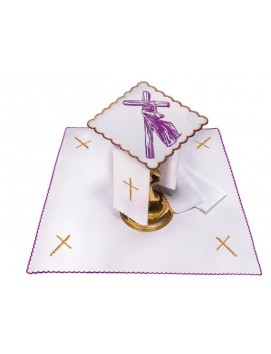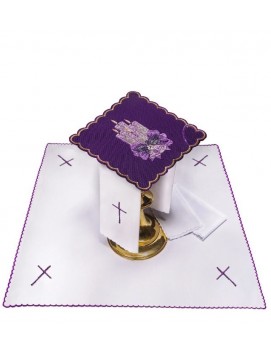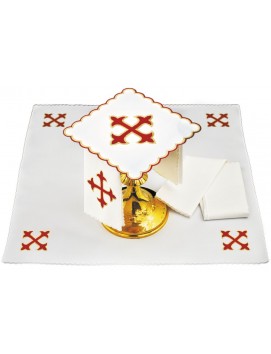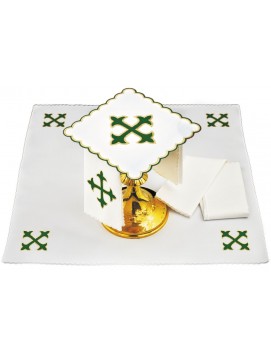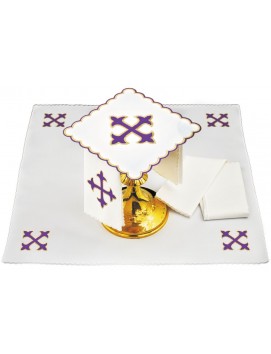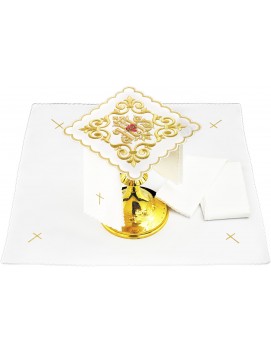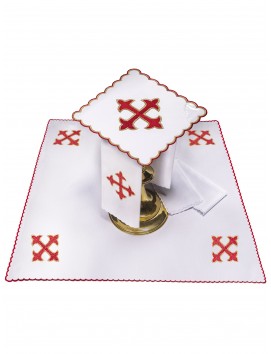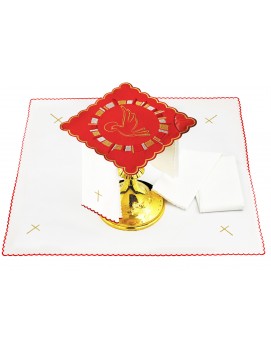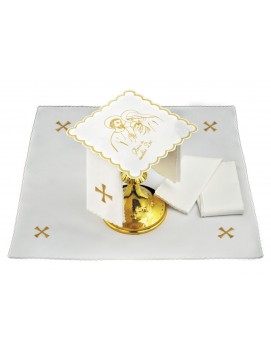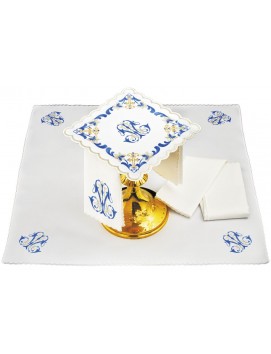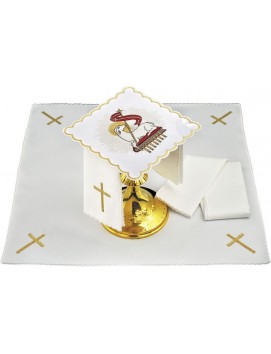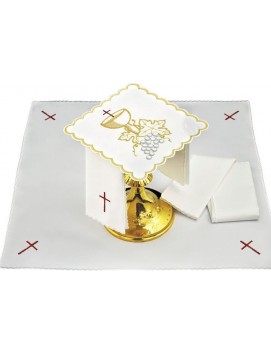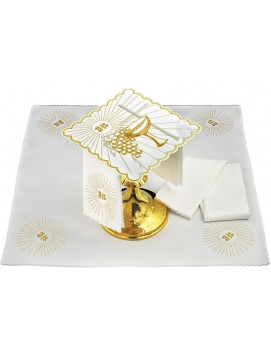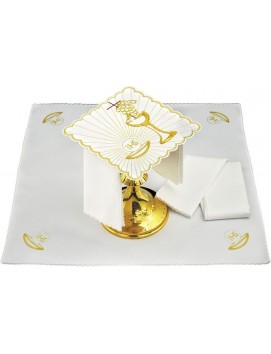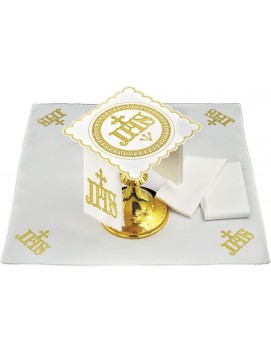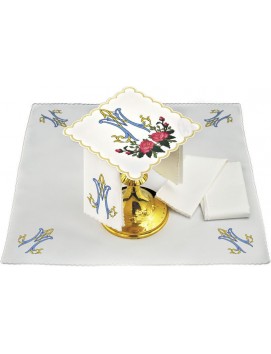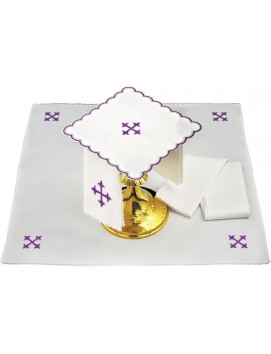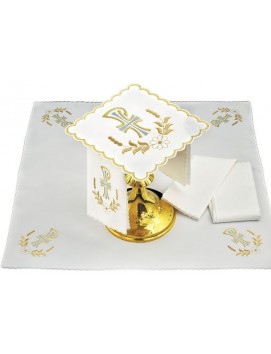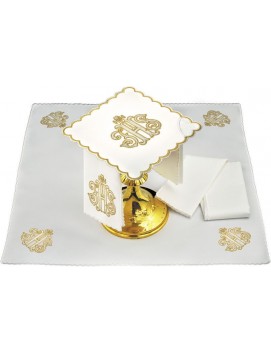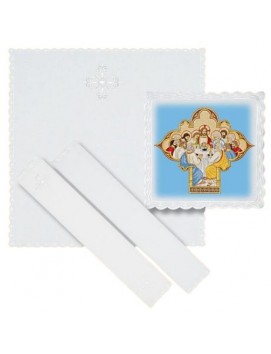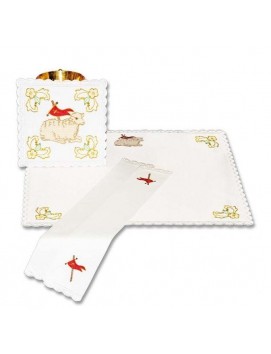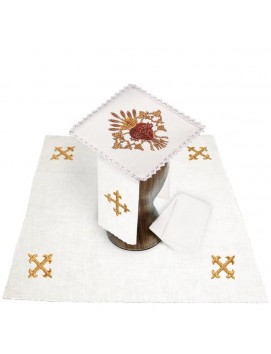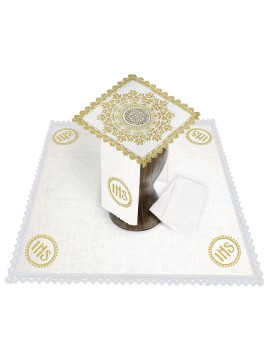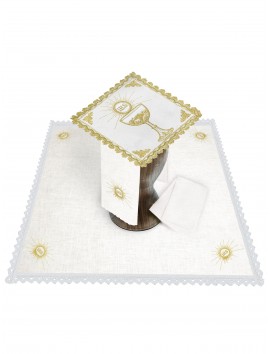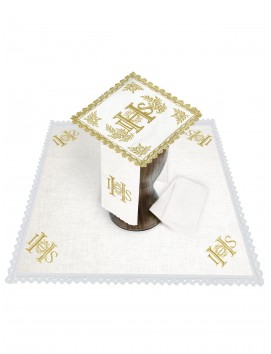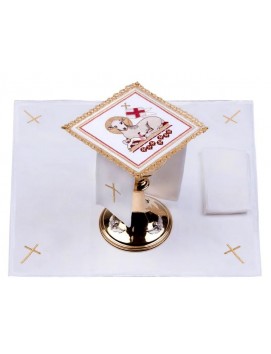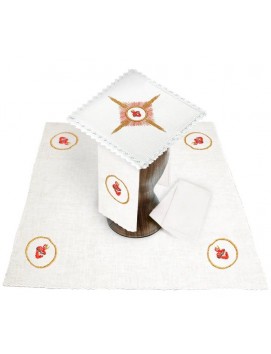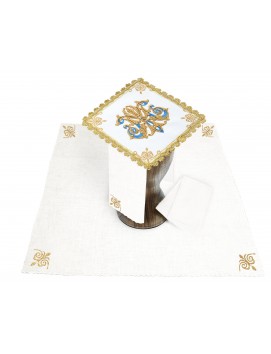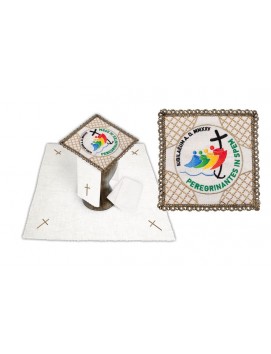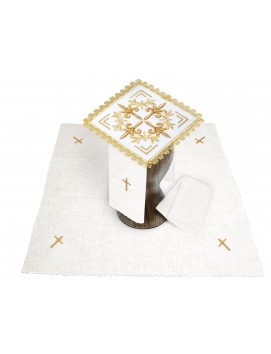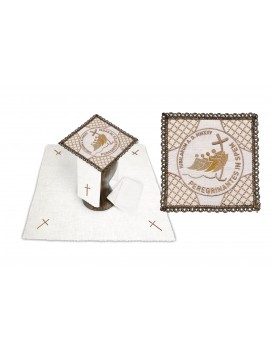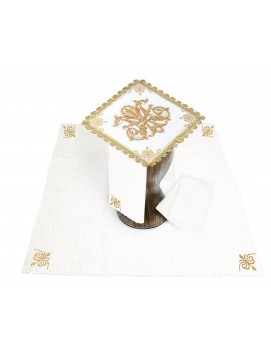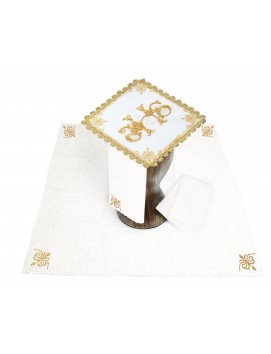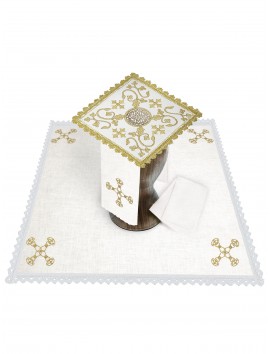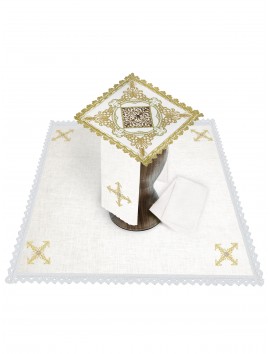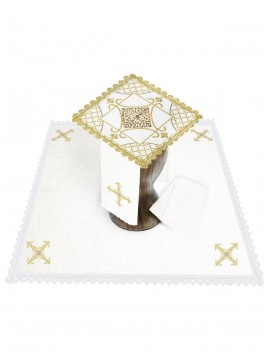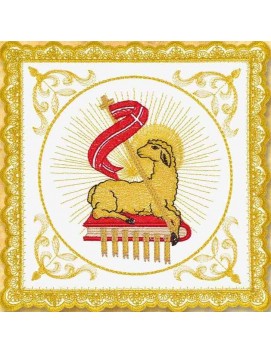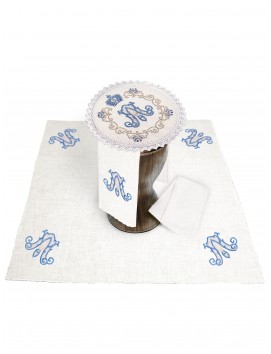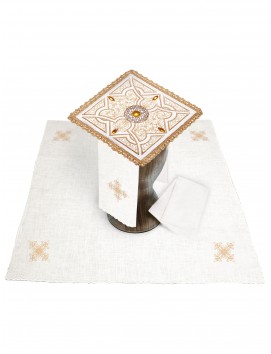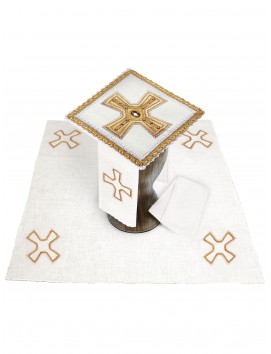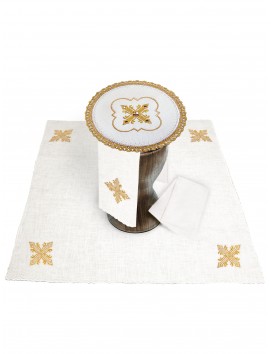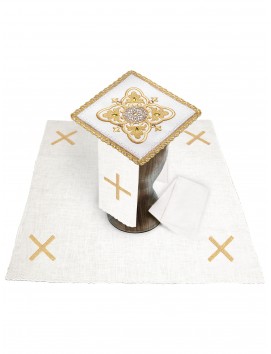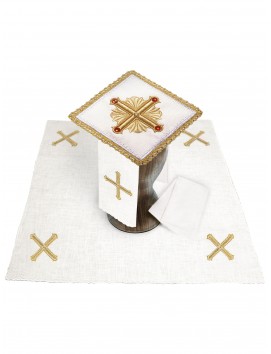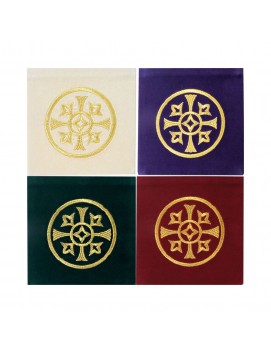No products
Chalice Linen Sets
Chalice Linen Sets are a collection of linens used during Mass and Communion in the Catholic Church. They are made from high-quality fabrics and are designed to provide an exquisite and timeless look to the liturgy. Chalice Linen Sets typically include a corporal, purificator, pall, and lavabo towel. Some sets are manually embroidered or trimmed with lace, while others are machine embroidered. The linens are adorned with embroidery depicting the Eucharistic motif using purple threads. Chalice Linen Sets are an important part of the Catholic liturgy and are used to cover the chalice and paten during the celebration of Mass.
Chalice Linen Sets are a collection of linens used during Mass and Communion in the Catholic Church. They are made from high-quality fabrics and are designed to provide an exquisite and timeless look to the liturgy. Chalice Linen Sets typically include a corporal, purificator, pall, and lavabo towel. Some sets are manually embroidered or trimmed with lace, while others are machine embroidered. The linens are adorned with embroidery depicting the Eucharistic motif using purple threads. Chalice Linen Sets are an important part of the Catholic liturgy and are used to cover the chalice and paten during the celebration of Mass.
Subcategories
-
Corporal
A Church corporal is a square white linen cloth, usually around 20 inches square, used during Mass in the Catholic Church. It is placed on the altar cloth but beneath the chalice and paten. The corporal is used to catch any particles of the consecrated bread and wine that may fall during the celebration of the Eucharist. According to traditional liturgical rules, the corporal must not be ornamented with embroidery, and must be made entirely of pure white linen. When not in use, it is usually folded three times and put away in a burse or corporas-case. The corporal is considered a sacred cloth and is treated with great reverence. It is washed first by a priest, deacon, or subdeacon in the church itself, in a place or a vessel specially reserved for this because it has been impregnated with the Body and Blood of Our Lord. Afterwards, it may be sent to the laundry and treated like other linen.
-
Pall
A Church pall is a cloth that covers the chalice during the celebration of the Eucharist in the Catholic Church. It is a square, stiffened white linen cloth that is usually adorned with a cross or other Christian symbols. The pall is placed over the chalice and paten to protect them from dust and other impurities. The use of the pall is a reminder of the Christian dignity of the Eucharist and the importance of the chalice and paten in the celebration of the Mass. The rules for the pall's color and use vary depending on religious and cultural traditions. In the Catholic Church, the pall is traditionally white, but it may also be black or violet. The pall is an important part of the Catholic liturgy and is used during the celebration of Mass and other liturgical services.
-
Purificator
A Church purificator is a small white linen cloth, usually around 12 inches square, used during the celebration of the Eucharist in the Catholic Church. It is marked with a cross in the center and is folded in three layers. The purificator is used to wipe the chalice and paten after the distribution of Holy Communion, and to purify them after the Mass. It is also used to wipe the priest's fingers after he has received the Eucharist. The purificator is made of absorbent cloth, usually linen, and is embroidered with a cross. In some cases, paper towels are used instead of purificators. The purificator is considered a sacred cloth and is treated with great reverence. It is washed first by a priest, deacon, or subdeacon in the church itself, in a place or a vessel specially reserved for this because it has been impregnated with the Body and Blood of Our Lord. Afterwards, it may be sent to the laundry and treated like other linen.
-
Lavabo towel
A Lavabo Towel is a small white linen cloth, usually around 11 inches by 17 inches, used during the Lavabo ceremony in the Catholic Church. The Lavabo ceremony is a religious ceremony performed by the priest or other ministers before the celebration of the Eucharist. During the ceremony, the priest washes his hands with water poured from a Lavabo bowl, and then dries them with the Lavabo towel. The Lavabo towel is a small altar linen or church linen item, and it must be a pristine white church linen cloth, as it symbolizes the purification that occurs as a result of the Lavabo ceremony. Lavabo towels are usually adorned with a front center cross. They are made of absorbent cloth, usually linen, and are treated with great reverence. Lavabo towels are an important part of the Catholic liturgy and are used during the celebration of Mass and other liturgical services.
-
Chalice veil
A Chalice Veil is a square of material that covers the chalice and paten until they are needed for preparation of the altar at the Eucharist. It is a liturgical vestment that is usually the same color as the vestments. The chalice veil is placed on top of the pall, which rests on top of the chalice and paten. The veil is used to cover the chalice when it is carried to and from the altar during the celebration of Mass. It is also used to cover the chalice during the Liturgy of the Word, which is the first part of the Mass. The chalice veil is an important part of the Catholic liturgy and is used to adorn and dignify the vessels that will contain the Body and Blood of the Lord. The veil is usually adorned with embroidery depicting the Eucharistic motif using purple threads. The chalice veil is considered a sacred cloth and is treated with great reverence. It is an essential part of the "vested chalice," which refers to the chalice and paten that are completely prepared for the liturgy with chalice veil and burse.
Chalice linen sets are an essential component of religious services, particularly within various Christian denominations. These sets typically include a corporal, purificator, pall, and a lavabo towel, each serving a specific function during the liturgy.
Understanding Chalice Linen Sets
Chalice linen sets are not just practical items; they are imbued with symbolism and reverence. The corporal is a square linen cloth upon which the chalice and paten are placed during the celebration of the Eucharist. The purificator is a smaller linen cloth used to clean the chalice after each communicant partakes of the wine, symbolizing the Blood of Christ. The pall is a stiffened square cloth that covers the chalice to protect the sacred contents from contaminants. Lastly, the lavabo towel is used by the celebrant to dry their hands, symbolizing purification before handling the Eucharistic elements.
The Importance of Quality and Hygiene
High-quality chalice linen sets are vital for maintaining hygienic practices during services. They ensure that the vessels used for consecration are protected and that any remnants are handled with care. Regular washing and proper maintenance of these linens are crucial for preventing contamination and preserving the sanctity of the communion ritual.
Cultural Variations and Customization
While the basic components of chalice linen sets are consistent across Christian traditions, cultural variations exist in design and usage. Some cultures may add intricate embroidery or religious symbols to the linens, enhancing their beauty and symbolic meaning. Many manufacturers offer customization options, allowing for personalization and alignment with specific religious beliefs.
Material Choices and Care
Chalice linen sets are typically made from materials like pure linen or cotton due to their durability and absorbency. Proper care, including hand washing with mild detergent and avoiding harsh chemicals, is recommended to extend the life of these linens.
FAQs
What are the components of a chalice linen set?
A chalice linen set usually consists of a corporal, purificator, pall, and lavabo towel.
How should chalice linen sets be cared for?
They should be hand washed using mild detergent, and harsh chemicals should be avoided to prevent damage to the fabric.
Can chalice linen sets be customized?
Yes, many manufacturers offer various designs, embroidery styles, and personalized details such as monograms or religious symbols.
Are chalice linen sets used across different denominations?
Yes, they are used in various religious denominations, with specific designs and symbolism that may differ between faiths.
What materials are used for chalice linen sets?
They are crafted from high-quality materials such as pure linen or cotton fabric for their durability and absorbency.
In conclusion, altar linen sets play a significant role in religious ceremonies, providing both practical functionality and a visual representation of the sacredness of the sacrament. Investing in quality sets and caring for them properly can greatly enhance the worship experience.

